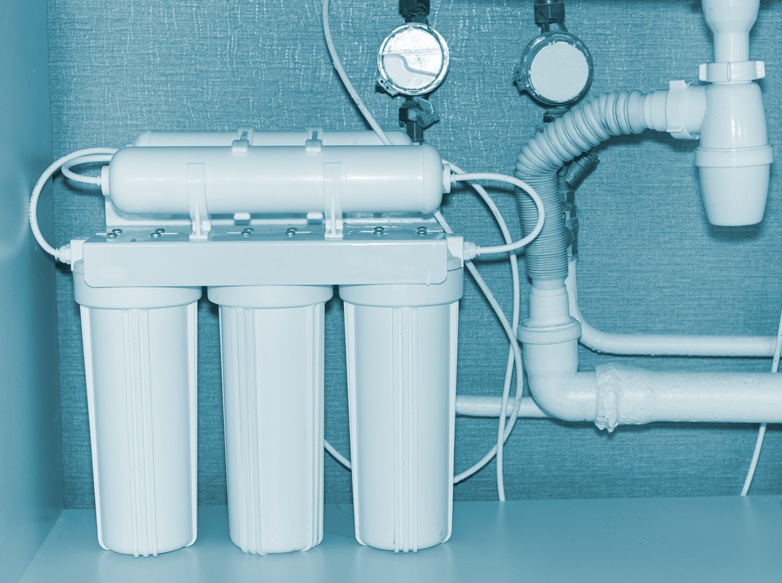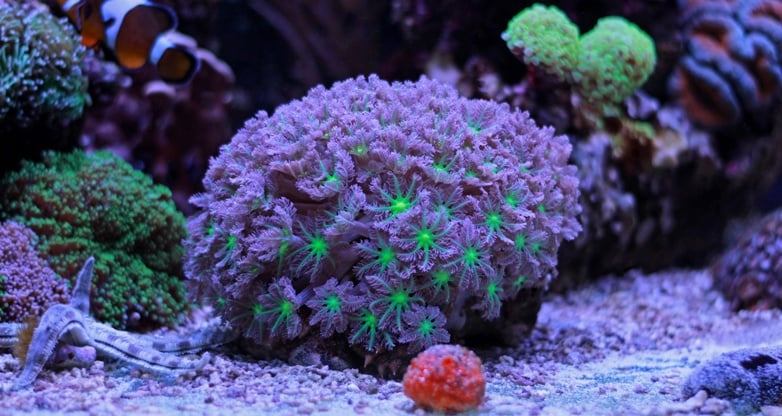How Total Dissolved Solids (TDS) and Electrical Conductivity (EC) Measurements can impact your Reverse Osmosis Deionized (RODI) filters in your aquarium?
A healthy aquarium begins with quality water. Oftentimes tap water in many parts of the world is not well suited for use in aquariums. This is especially true for saltwater aquariums housing sensitive coral species.
Sometimes tap water contains potential contaminants (such as phosphates or trace metals) which might be safe for human consumption, but could have detrimental effects on your aquarium life. For this reason many hobbyists use reverse osmosis deionized (RODI) filters on their source water. RODI filters can be a very effective way of removing contaminants from your aquarium. Although using a RODI system is simple, many factors can limit their effectiveness. Range and accuracy are critical aspects for instruments used for measurements in pure water applications.
In this blog we will dive deeper into understanding Total Dissolved Solids and Electrical Conductivity Measurements and the impact that these measurements can have on your RODI filters in your aquarium.
What are Total Dissolved Solids (TDS) Meters?
In order to measure the effectiveness of your RODI filter, many units have built in total dissolved solids or TDS meters. A TDS meter is used to determine the amount of dissolved particles in the water, usually in parts-per-million or ppm. However this is not necessarily true. TDS meters are actually measuring electrical conductivity (EC).

EC is the measurement of how well a medium (usually water) conducts electricity. In general, conductivity increases as the concentration of ionic dissolved solids increases. Using EC as a measurement of TDS is non-specific for ion type.
An ion is a charged particle present in the solution that contributes to the current flow. Conductivity measurements are used for additional units such as TDS and salinity. EC is commonly expressed as micro Siemens per centimeter (μS/cm) or milli-Siemens per centimeter (mS/cm). Units may be converted as:
1000 μS/cm = 1.0 mS/cm
Relationship between TDS and EC
Technically, TDS is a measure of mass of solid content dissolved in a solution. To determine TDS, a solution sample with known volume is evaporated to dryness and the residue is weighed. The final result is reported as mg/L, ppm, or g/L.
An EC measurement is commonly used to estimate TDS based on the assumption that the solids are predominately ionic in nature, and the relationship between the dissolved ions and conductivity is known. The relationship between EC and TDS can be expressed as a “factor.” Most units in the reef market have a preset, the factor which is 0.5, this approximates the relationship between dissolved sodium chloride and EC. For example, water with an EC of 100μS/cm has a TDS of 50ppm when the factor is 0.5.
Understanding your TDS Meter’s Result
When using a TDS meter for your RODI system, 0 ppm is considered the most ideal result possible. TDS meters cannot detect non-ionic particles (like sugar) and will not contribute to the reading. Typically inline TDS monitors are used to measure purity of water before and after it passes through various filter stages. As water moves through different cartridges, particles are removed, and the end result is water with lower conductivity. Percent rejection is calculated using (TDS coming into the RODI unit) / (TDS of the RODI output).
Drinking water typically has an EC value of 500-800 μS/cm (0.5 to 0.8 mS/cm) or a TDS value of 250 to 400 ppm. For reference, natural seawater has an EC reading of 53,000 μS/cm (53.0 mS/cm) or 9.24 g/L TDS. Ultrapure water tends to have an EC value of less than 1 μS/cm, or 0.5 ppm TDS; however, resistivity (MΩ•cm) or conductivity (μS/cm) are typically used for Ultrapure water, not TDS.

The Importance of Range in Determining Accuracy
Accuracy is a crucial aspect of any analytical instrument, particularly EC/TDS meters. Most EC/TDS meters use percent (%) of the full scale (f.s.) to determine accuracy. This becomes very important in relation to low conductivity water where values as close to zero are preferred.
Range is used to describe the minimum or maximum detection limits for that particular meter. Range is thus used in determining the accuracy of TDS meters. For example, a common accuracy statement for many EC/TDS meters is ± 2% f.s., with a range of 999 ppm TDS. In this scenario the measure of uncertainty is 2 percent of 999 ppm.
0.02 X 999 ppm = 19.98 ppm
This would mean your results could be ±20 ppm different then the results displayed. So if your meter was reading 30ppm the results could actually be from 10 ppm to 50 ppm.
Is Your EC/TDS Meter Designed for Pure Waters?
EC/TDS meters come in a variety of price points ranging in quality, accuracy and applications. If you are using a TDS meter for RODI water to be used in a reef tank, then you want a meter designed for low range conductivity.
A goal of most reef keepers is to have source water as close to 0 ppm total dissolved solids as possible. Many hobbyists use their TDS meter to determine when it’s time to change their RODI cartridges. If your TDS meter has a range of 1000 ppm or more, then you can expect your results to never be more accurate than ±20 ppm (assuming a 2% f.s. accuracy statement).

Calibration
Calibration is an important consideration when using EC/TDS meters. You should calibrate with a value close to your sample’s conductivity. Conductivity standards are salt solutions for which the conductivity and temperature dependence are known.
A well-defined relationship between potassium chloride (KCl) concentration and electrical conductivity exists so these solutions are typically used as standards. A standard is used to determine the cell constant. In theory this is a defined geometric constant, in practice, the cell constant can change as the probe ages and is used.
For most pure water applications 84 μS/cm standards are used. However, it is important to note that as conductivity standards lower these cannot be used due to instability. We recommend calibrating regularly.
Temperature Compensation
Conductivity changes with ion concentration and temperature. Absolute conductivity is an EC measurement without temperature compensation. If the conductivity changes along with the temperature change of a solution and it is a known characteristic, the conductivity measurement can be corrected to a reference temperature (typically 20 or 25°C) by carefully measuring the solution temperature. Fortunately, Hanna EC sensors incorporate an integrated temperature sensor to measure solution temperature.
Are You Measuring Your Reservoir?
Although measuring the output of your RODI system is effective, it is best practice to also measure water from your storage reservoir. Over time contaminants can make their way back into your water storage and cause elevated TDS/EC values.
This is especially true for saltwater aquarium hobbyists. Quality RODI water has such a low conductivity that many salts, supplements, and additives will cause noticeable changes to the EC value if cross contamination occurs. It is best practice to use a low range EC/TDS meter to check the water purity periodically in your reservoir.
Hanna RODI EC/TDS Meters
We manufacture a wide range of EC/TDS meters designed for use in pure water applications. For spot checking your system we recommend the Pure Water Tester HI98308 . This handheld meter is temperature compensated, has a maximum detection limit of 99.9 µS/cm (approx. 50ppm TDS), accuracy of ±2% f.s., and can be manually calibrated with 84 µS/cm buffer.
The Pure Water Tester can be used for checking your reservoir or by taking a sample directly from your RODI output. A reading of 20.0 µS/cm equates to 10ppm TDS, and your measure of uncertainty would be from 18.02 µS/cm to 21.98 µS/cm.
For constant monitoring your RODI reservoir we also have our HI983304 Pronto EC Meter for Demineralized Water with LCD and Alarm. This meter has a range of 0.00 to 19.99 µS/cm, IP54 water resistant housing, automatic temperature compensation, user selectable set point, and visual LED alarm.

The Pronto HI983304 will activate when EC values differs from the set point more than 1.00 µS/cm. Since the HI983304 has a very narrow range, it does not need to be calibrated for pure water applications.
Both meters provide reliable, accurate and intuitive measurements for electrical conductivity (TDS) in your RODI system.
Learn More About the 8 Common Mistakes When Taking Conductivity Measurements.
Click here to download a FREE PDF version of this article today! Now you can print it out and use it as a reference. The perfect guide for helping you to achieve testing success every time!



